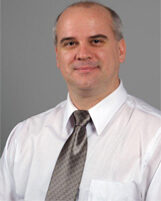Project description :
Summary (MAX of 2100 characters with spaces)
This project aims to establish new design methods for robust and efficient automotive navigation and optimal management of a fleet of vehicles in harsh environments. In addition, the project also aims to develop innovative metrics for real-time analysis of dangerous driving behaviour as well as real-time analysis of car accidents in order to significantly improve global safety of Canadian drivers. In general, this research proposes to combine measurements from a high sensitivity GPS receiver with data coming from a self-contained inertial navigation system and other complementary autonomous sensors such as odometers and magnetometers. Moreover, in order to provide an affordable solution, the targeted system will be based exclusively on the use of very low cost sensors. It is expected that this project will help reduce the environmental footprint of motor vehicles in addition to having a significant positive impact on overall vehicle safety. For example, improving vehicle localisation accuracy and robustness in harsh environments can significantly reduce the time to find a stolen or misplaced vehicle, which can have an important impact on Canadian companies’ finances. Furthermore, having a robust and precise solution for monitoring vehicle behaviour can lead to the implementation of a new taxation system based on car usage or on driving behaviour, which according to recent studies, can help reduce vehicle greenhouse gas emissions by up to 10%. In addition, accurate reconstruction of car accidents in real-time allow prediction of specific parameters of an accident scene thus improving reaction time and vehicle safety. The proof-of-concept demonstrator will be evaluated in-laboratory and on-road using simulation equipment and a car test platform under real operating conditions in order to characterize protocols and system performance. The project will contribute to international initiatives for the definition of new standards and contribute to Canadian efforts to reduce greenhouse gas emissions, and create new employment opportunities for the team of highly qualified personnel.
Responsibilities of the candidate:
According to the schedule, this master’s student will be in charge of the following tasks:
1) 3-54 Study on available options for car simulation software
2) 3-55 Initial development of system test bench
3) 4-31 Realization of accident reconstruction software
4) 4-32 Establishment of a communication protocol
5) 4-33 Establishment of real-time wireless communication link
6) 4-34 Test bench validation
The general objective of the Masters research project is to develop a complete virtual test bench for the simulation of automotive scenarios, for the validation of the developed systems as well as for the reconstruction of road accidents. During the first phase of the project, the student will study existing simulation software for the simulation of automotive vehicle dynamics as well as the possibilities to modify and adapt them for the realization of the test bench. The selected software should at least allow automotive trajectory generation including position, velocity and attitude of the vehicle within different scenarios that may include dangerous driving behaviours and road accidents. The Master’s student will then incorporate the work done by the research team in conjunction with simulation tools to this simulation software in order to integrate within a single system the ability of trajectory generation and the possibility of generating associated realistic sensor’s raw measurements. Following this, the student will explore possibilities to reconstruct an accident scenario based solely on output coming from the developed system. He will principally use results from the analysis metrics as well as the navigation solution calculated by the advanced integrated navigation system in order to reconstruct the recorded car dynamics. Finally, the student will develop a communications protocol allowing the test bench to communicate with the Orchid VTADS platform either in wired or wireless connections.
![]()
